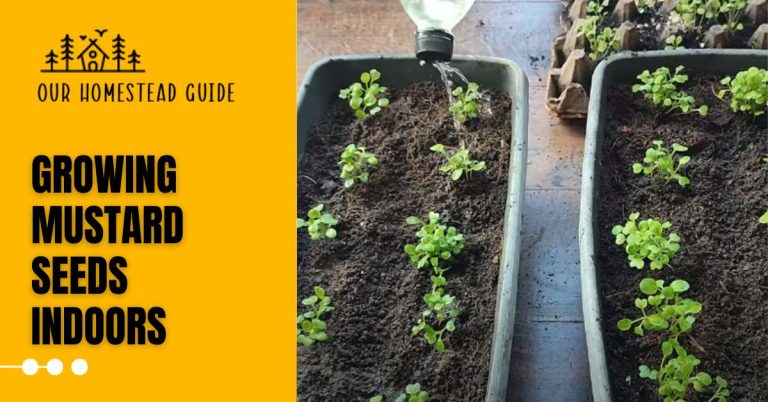A Complete Guide To Planting Tangerine Seeds: Step by Step
Planting Tangerine Seeds The tangerine tree, formally known as Citrus reticulata, is a striking addition with its rich, emerald-green foliage. It thrives inside in milder areas and thrives outdoors, especially in U.S. Department of Agriculture plant hardiness zones 8b through 11.
Cultivating a tangerine tree from its seeds is a fun pastime for kids, thanks to the seeds’ proclivity to sprout and grow into beautiful trees. However, it is worth mentioning that the majority of tangerine trees grown from seeds seldom reach the size required for flower and fruit development.
If you’ve ever wondered if you could grow tangerines from seeds, you’re in luck. Whether you’re a seasoned gardener or a newbie, this article will walk you through the steps. Prepare yourself for an exciting voyage that will fill your garden with vivid greens and satisfy your taste buds with the wonderful flavor of homegrown tangerines.
How to Planting Tangerine Seeds?
Selection of Seeds:
To begin, gather tangerine seeds. This process may also be used to other citrus seeds such as lemon, grapefruit, or orange.
Preparing the Seeds:
To clean the seeds, run them under water.
Soak the seeds in lukewarm water for at least a day, or for a few hours, to help in germination. During this period, change the water often.
Remove the outer shell if desired:
If the seed hasn’t already begun to germinate, carefully remove the outer shell to hasten the process. Make a tiny incision with a knife and carefully peel off the outer shell.
Container for Germination:
Make a germination container. Place a moist paper towel inside the container and use the paper towel technique.
Spread the seeds out on a paper towel:
Place the washed and prepped seeds on a wet paper towel.
Seeds Label:
To maintain track of the seeds’ identities, label them with their names (e.g., tangerine, lemon, grapefruit).
Finish the Paper Towel:
Fold the paper towel over the seeds and spritz with water softly.
Container Closure:
To establish a sealed, humid atmosphere, cover the container.
Germination:
Keep the container in a warm room or near a source of heat.
Most seeds should germinate and produce roots within a week.
Transplanting:
When the seeds establish roots, they are ready to be transplanted. Plant them in pots or straight into the soil, with the root facing downward and a shallow layer of dirt covering them.
Seedling Maintenance:
Maintain a continuously wet but not soggy soil.
Place the seedlings or pots in a well-lit place with partial sunshine.
Observe Their Development:
Your citrus seedlings will mature into healthy plants over time.
Characteristics and Values Planting Tangerine Seeds
Here’s a table with characteristics and corresponding values:
| Characteristic | Values |
| Planting Method | Paper towel germination method |
| Suitable Citrus Varieties | Tangerines, lemons, grapefruits, oranges |
| Seed Preparation | Soaking in lukewarm water for a day or a few hours |
| Optional Outer Shell Removal | Carefully removing the outer shell to expedite germination |
| Germination Container | A container with a damp paper towel |
| Labeling | Labeling seeds for easy identification |
| Germination Duration | Approximately one week for most seeds |
| Transplanting | Planting sprouted seeds in pots or soil |
| Care Instructions | Maintaining consistent moisture, well-lit area with partial sunlight |
| Expected Seedling Growth | Healthy citrus seedlings ready for potting or planting |
growing tangerine from seed
Growing tangerines from seeds is a satisfying and gratifying experience. Begin by choosing high-quality tangerine seeds and following a step-by-step planting procedure. It is critical to provide the correct circumstances for healthy seedlings, including plenty of sunshine and well-drained soil.
You may watch your tangerine tree develop and eventually enjoy the sweet, homegrown fruit it produces if you have patience and care.
how to plant tangerine seeds from fruit
To plant tangerine seeds from fruit, first remove the seeds, then rinse and dry them. Plant them in well-draining soil and cover with approximately a half-inch of dirt. Maintain adequate moisture and sunshine to ensure good germination and future tangerine tree development.
How long do tangerine seeds usually take to germinate?
Tangerines are delightful citrus fruits that are available all year. Many individuals are interested in starting their own tangerine trees from seeds. One often asked question is, “How long does it typically take for tangerine seeds to germinate?” In this post, we’ll look at the intriguing process of tangerine seed germination and address this question.
Tangerine seeds are very easy to germinate, however sprouting might take some time. Tangerine seeds germinate around 10 to 15 days on average, however this might vary based on a variety of factors like as age, seed quality, and germination circumstances.
A few actions must be taken in order for tangerine seeds to germinate effectively. To begin, choosing ripe and healthy tangerines is critical for obtaining high-quality seeds. When the seeds have been collected, they should be carefully removed from the fruit and cleansed of any pulp or debris.
Scarification, which is the act of producing tiny holes on the seed coat to facilitate faster germination, is the following phase. This can be accomplished by gently rubbing the seeds with sandpaper or by scratching the seed coat with a nail file. Scarification aids in the breakdown of the seed’s outer coat, allowing water and air to penetrate more freely.
After scarification, immerse the tangerine seeds in water overnight to increase the odds of successful germination. This step is optional, however it might be advantageous for very hard or aged seeds.
When given the proper circumstances, such as scarification, soaking, and planting in suitable soil, tangerine seeds normally sprout in 10-15 days. It is critical to maintain temperature and moisture conditions for effective germination. Growing tangerines from seeds is a rewarding way to enjoy local sweetness.
What kind of soil and growing conditions are best for tangerine seedlings?
Tangerine seedlings grow best in well-drained, slightly acidic to neutral soil with a pH range of 6.0 to 7.5. A mixture of peat moss, perlite, and organic materials is effective. They require direct sunshine for at least 8 hours every day.
The optimal temperature range is 70-100°F (21-37°C). Healthy tangerine seedlings require adequate hydration, sufficient air circulation, and frost protection.
Diseases And Its Solution Planting Tangerine Seeds
Damping-Off:
Symptoms: include seedlings wilting and collapsing at the soil’s surface.
Solution: Maintain well-drained soil, provide adequate ventilation, and prevent overwatering.
Rotten Roots:
Symptoms: include discolored roots and reduced development in seedlings.
Solution: Use well-draining soil, water sparingly, and consider fungal treatment if needed.
Canker of Citrus:
Symptoms: include lesions on the leaves, fruit, and stems.
Solution: Isolate diseased plants, trim affected areas, and use copper-based sprays.
Miner of Citrus Leaf:
Symptoms: tunneling leaves with silvery streaks are the symptoms.
Solution: Prune and kill damaged leaves, and manage larvae using neem oil or horticultural oil.
Infestations of Aphids:
Symptoms: include the presence of small, pear-shaped insects on the leaves.
Solution:, encourage natural predators or apply insecticidal soap.
Infections caused by fungi:
Symptoms: include spots or sores on the leaves and stems.
Solution: Maintain excellent air circulation, minimize overhead watering, and use fungicides as needed.
Conclusion:
planting tangerine seeds is a gratifying and simple hobby that allows you to cultivate your own citrus trees at home. You may see the metamorphosis from seeds to healthy tangerine trees with careful preparation, patience, and good maintenance. Accept the thrill of caring for these trees and the promise of eating homegrown tangerines in the future.
Most Frequently Asked Questions!
Can I immediately plant tangerine seeds from a store-bought tangerine?
Yes, you can use store-bought tangerine seeds, but they may not yield similar fruit owing to cross-pollination.
When is the optimum season to grow tangerine seeds?
Tangerine seeds may be sown all year, although many gardeners prefer spring since it has a longer growth season.
Do tangerine seeds require any particular handling before planting?
Soaking the seeds in lukewarm water for a day might help them germinate faster.
Should I remove the tangerine seeds’ outer shell before planting?
It is optional, however it can hasten germination. Remove the shell with care to avoid injuring the seed within.
How deep should tangerine seeds be planted in soil or potting mix?
Plant the seeds 1 inch deep in soil or potting soil.
What sort of soil should I grow tangerine seeds in?
Use a well-draining potting mix with a pH between 6.0 and 7.0.
How frequently should I water my tangerine seedlings?
Maintain a continuously wet but not soggy soil. When the top inch of soil seems dry, water it.
When should I expect my tangerine seeds to sprout?
When can I expect tangerine seedlings to sprout?
Tangerine seedlings usually grow in 2 to 4 weeks, however this varies.
How long does it take for tangerine trees to mature from seed?
Tangerine trees can take many years to yield fruit from seed, generally 3 to 5 years or more.
Tangerine trees can they be planted in pots or containers?
Tangerine trees may be grown in pots, but the pot must be large enough to hold the full tree.
Are there any typical pests or illnesses to be aware of when starting tangerine plants from seed?
Tangerine trees are sensitive to pests such as aphids and diseases such as citrus canker. Inspect your trees on a regular basis and take necessary action to remedy any concerns that arise.
you may also like this article.
Complete Guide to Planting Hazelnut Seeds: A Recipe to Success




